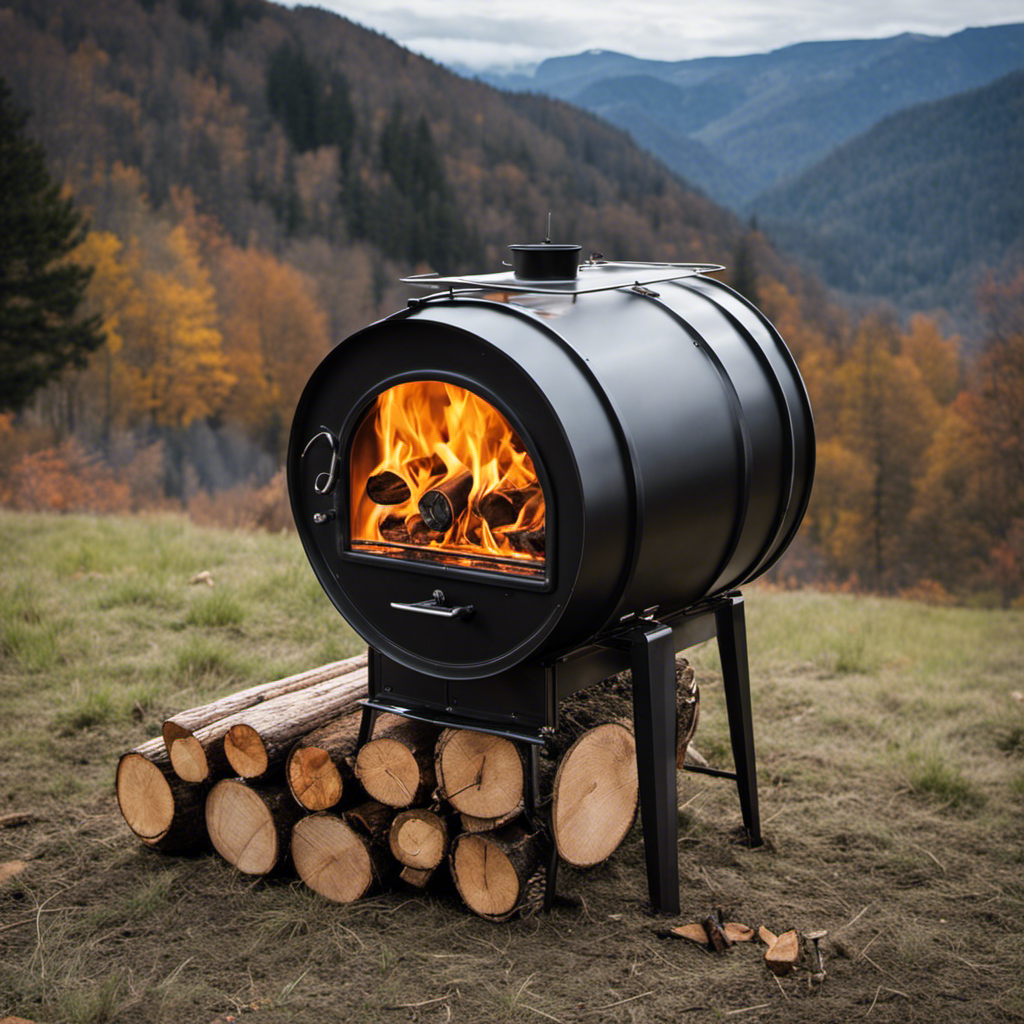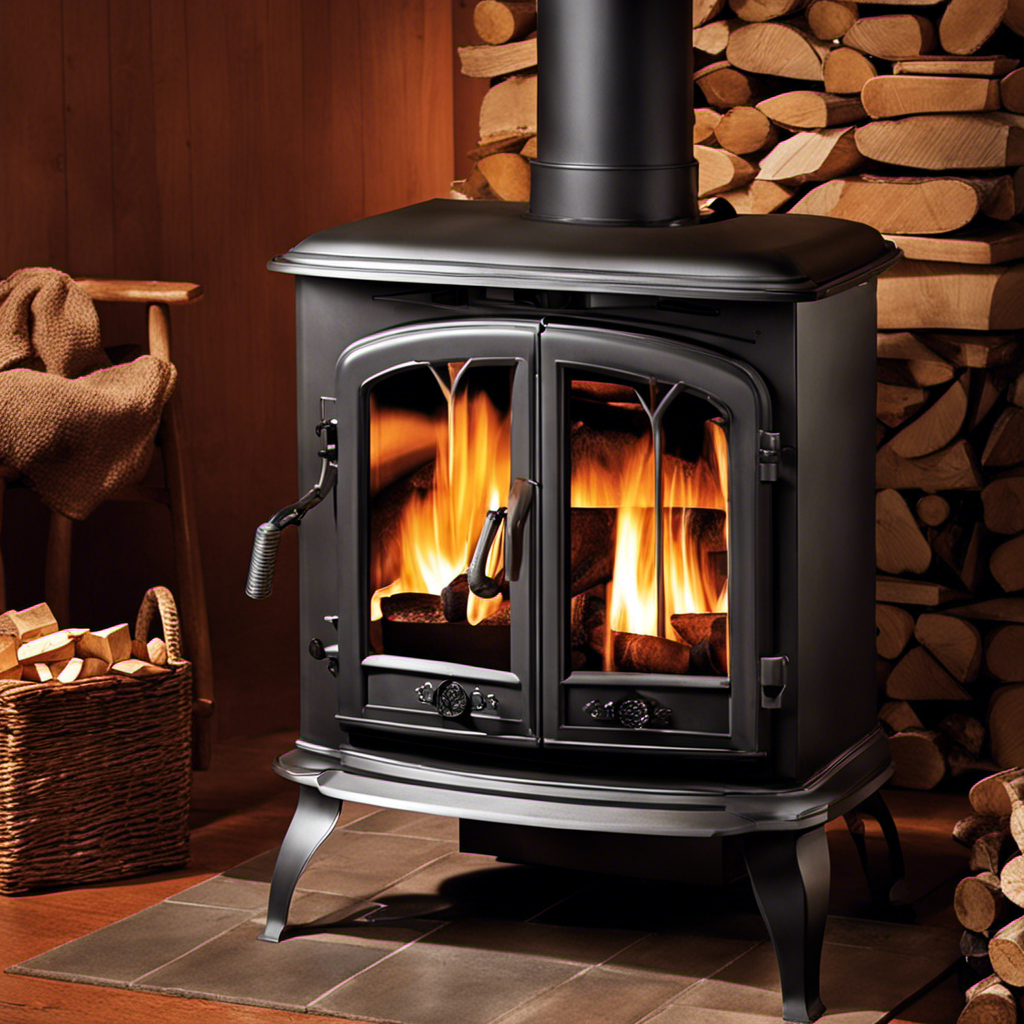As a wood stove enthusiast, I frequently ponder, ‘What is the ideal operating temperature for a wood stove?’ It is crucial to determine this specific temperature for optimal efficiency.
In this article, we’ll explore the factors that affect heat output, the importance of striking the right balance between heat and efficiency, and some handy tips for maintaining and controlling your wood stove’s temperature.
So, let’s dive in and discover how to keep your home cozy with proper wood stove burning.
Key Takeaways
- The optimal temperature range for wood stove performance is between 400°F and 600°F.
- Maintaining this temperature range is crucial for efficient and effective wood stove burning.
- Factors such as fuel quality, firebox size and design, and proper ventilation affect the heat output of a wood stove.
- Achieving the right balance between heat and efficiency requires optimizing airflow, fuel selection, and using air vents for temperature control.
The Optimal Temperature Range for Wood Stove Performance
In my experience, the optimal temperature range for wood stove performance is between 400°F and 600°F. Maintaining this temperature range is crucial for efficient and effective wood stove burning.
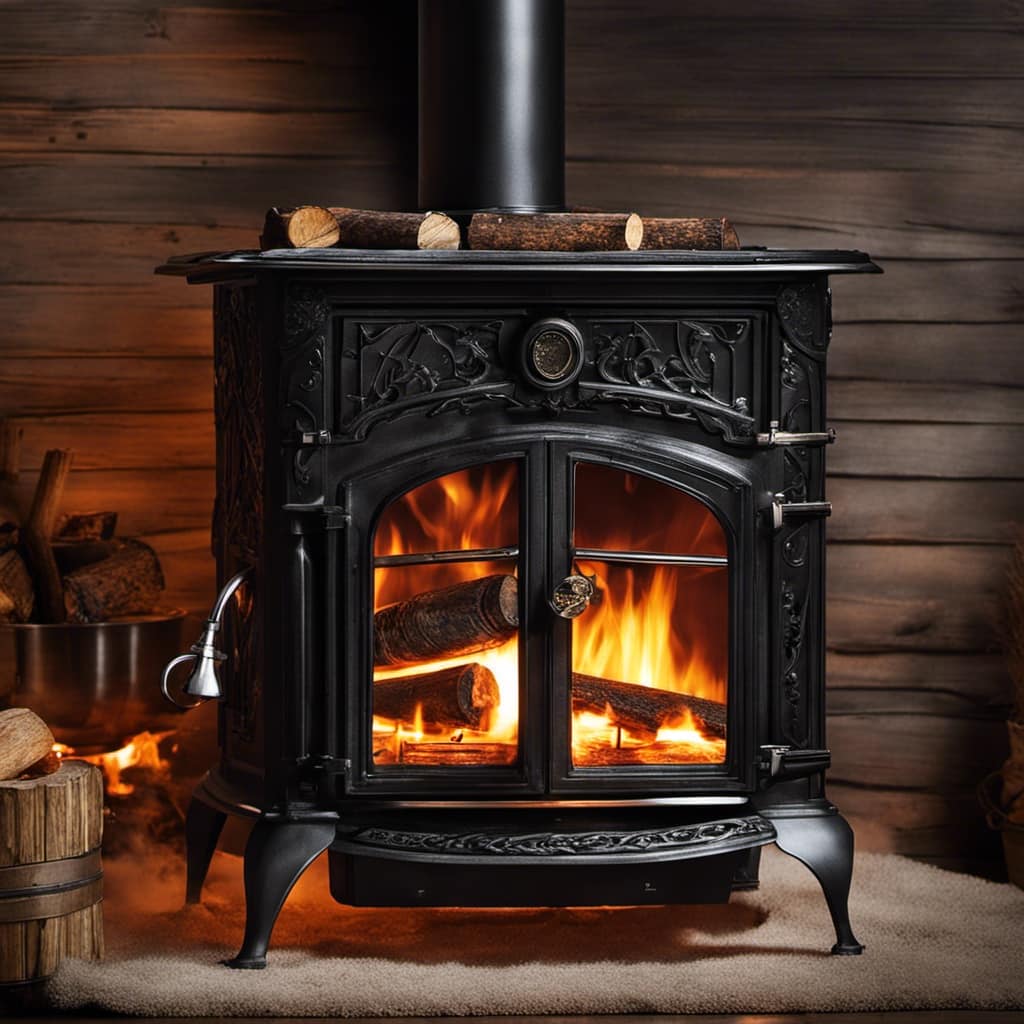
Proper ventilation plays a significant role in achieving and maintaining the desired temperature. Without adequate airflow, the temperature can drop below the optimal range, leading to incomplete combustion and the production of harmful byproducts like carbon monoxide. On the other hand, excessive ventilation can cause the temperature to rise too high, potentially damaging the stove or surrounding materials.
Additionally, the quality of the wood used also impacts the stove temperature. Dry, seasoned wood burns hotter and more efficiently, while wet or green wood can lower the temperature.
Understanding these factors is essential for maximizing the performance of a wood stove and ensuring safe and efficient heating.
Moving on to the next section, let’s explore the various factors that can affect the heat output of a wood stove.
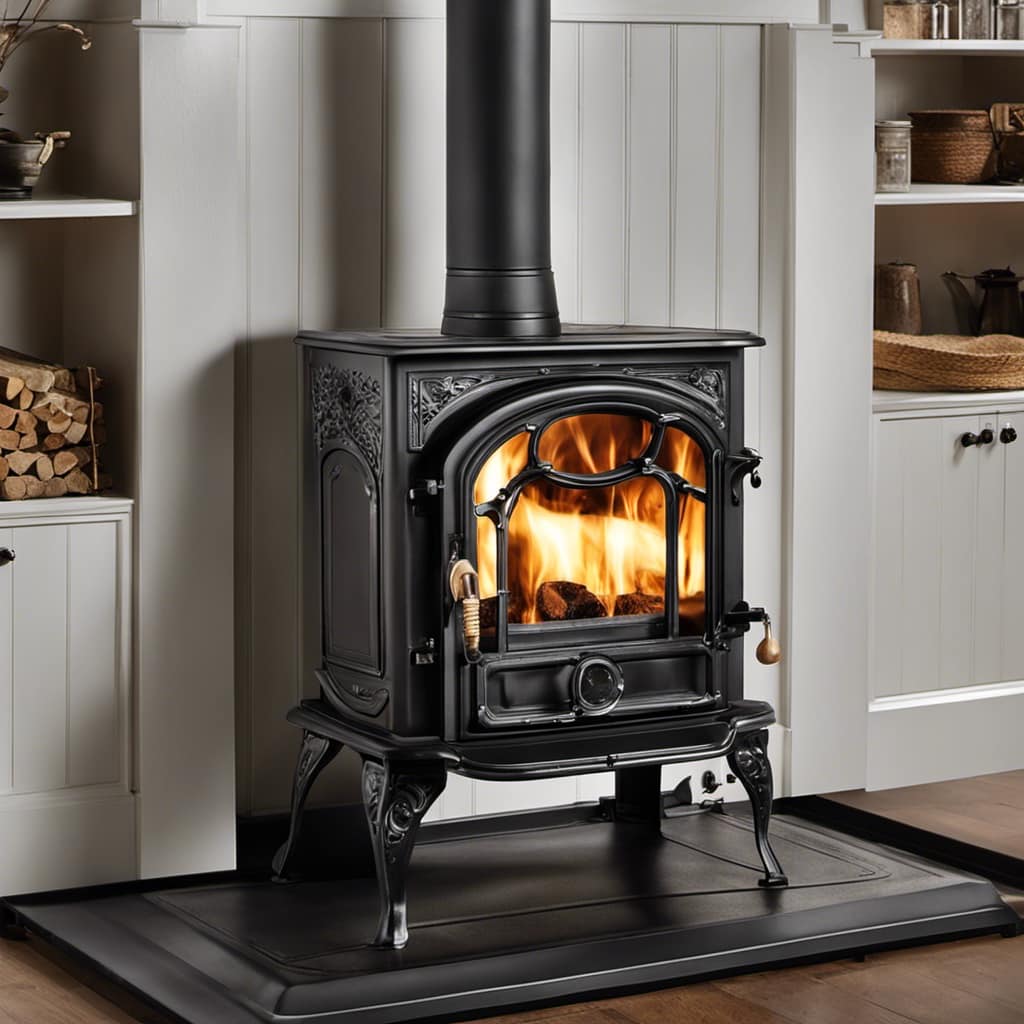
Factors Affecting the Heat Output of a Wood Stove
I’ve noticed that various factors can impact how much heat a wood stove produces. Understanding these factors is crucial for maximizing the efficiency and heat output of your wood stove.
Here are three key factors that affect the heat produced by a wood stove:
-
Fuel quality: The type and moisture content of the wood you use can significantly impact heat output. Dry, seasoned wood burns more efficiently and produces more heat.
-
Firebox size: The size and design of the firebox determine how much wood can be burned at once. A larger firebox allows for a greater heat output.
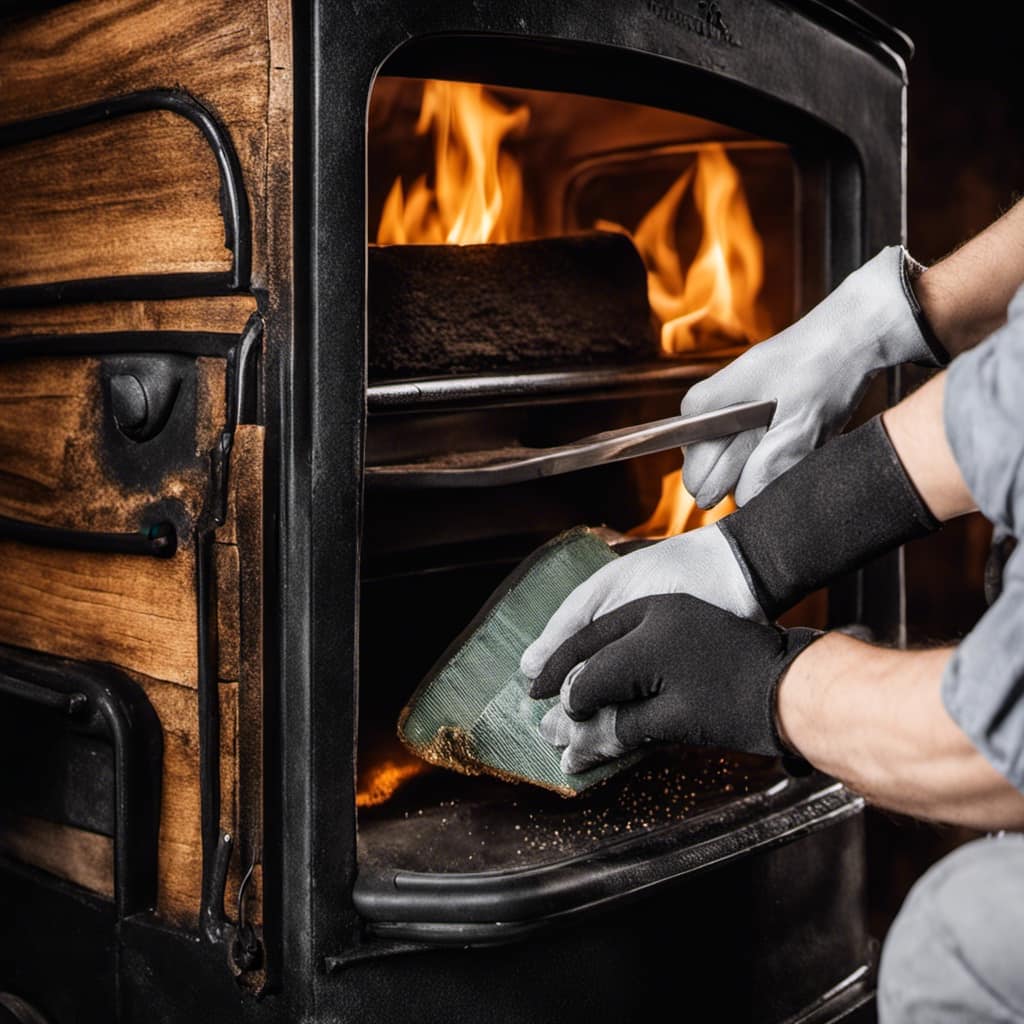
-
Ventilation: Proper ventilation is essential for efficient combustion and heat distribution. A well-designed chimney and proper air intake ensure optimal airflow and efficient burning.
By considering these factors and making necessary adjustments, you can achieve the right balance between heat and efficiency in your wood stove.
Transitioning to the next section, let’s explore how to achieve the ideal temperature range for optimal wood stove performance.
Achieving the Right Balance Between Heat and Efficiency
To maintain a balance between heat and efficiency, I focus on optimizing the airflow and fuel selection in my wood stove. Achieving maximum warmth and fuel efficiency is crucial to getting the most out of my wood stove.
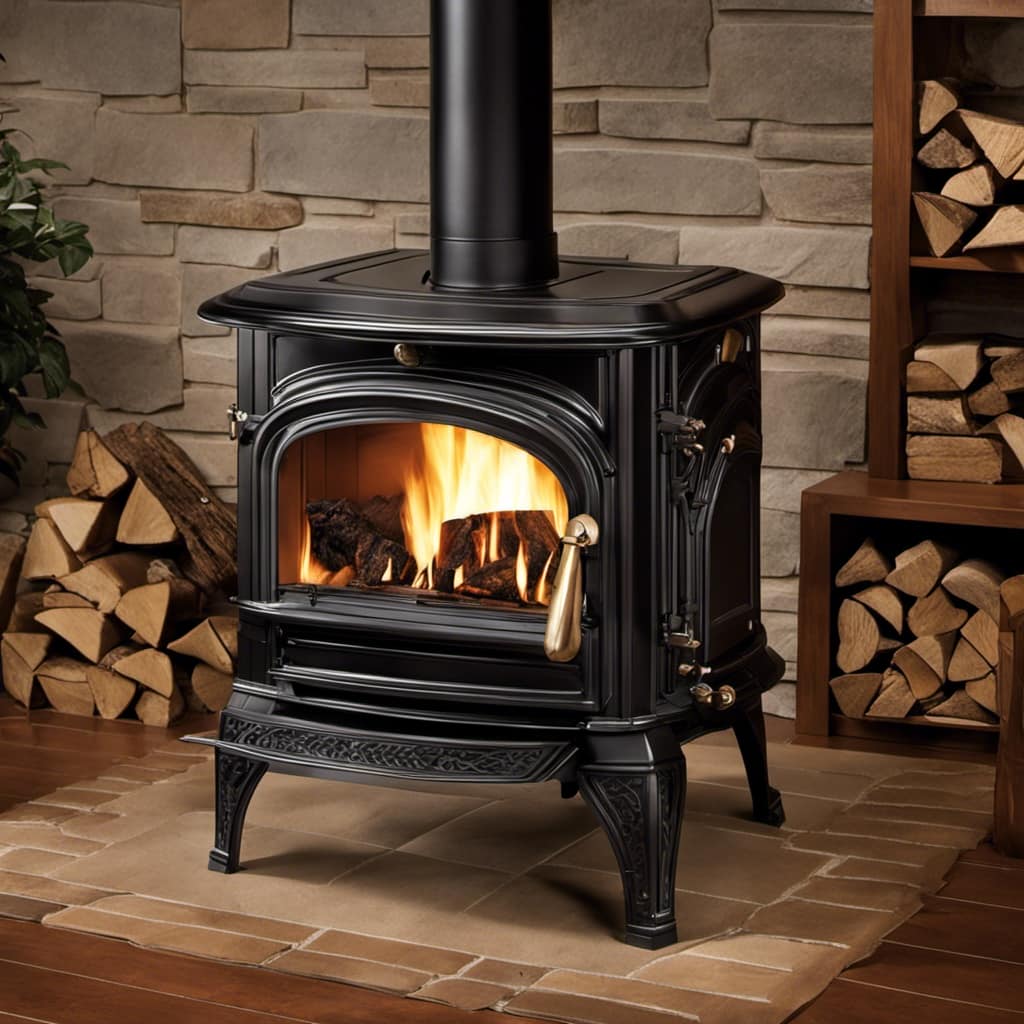
When it comes to airflow, I make sure that the damper is open enough to allow sufficient oxygen to reach the fire, but not too much that it creates excessive heat loss. This careful balance ensures that the fire burns efficiently and produces enough heat to warm up my space effectively.
Additionally, choosing the right type of fuel is essential for achieving maximum warmth and fuel efficiency. I opt for well-seasoned hardwood, as it burns longer and hotter, providing more heat output while using less fuel.
Tips for Maintaining and Controlling the Temperature of Your Wood Stove
Maintaining and controlling the temperature of my wood stove is essential for creating a comfortable and cozy atmosphere in my home. Here are some tips for adjusting airflow and avoiding common mistakes when using a wood stove:
-
Opening the damper: By opening the damper, I can increase the airflow and allow more oxygen into the firebox. This helps the fire burn hotter and produce more heat.
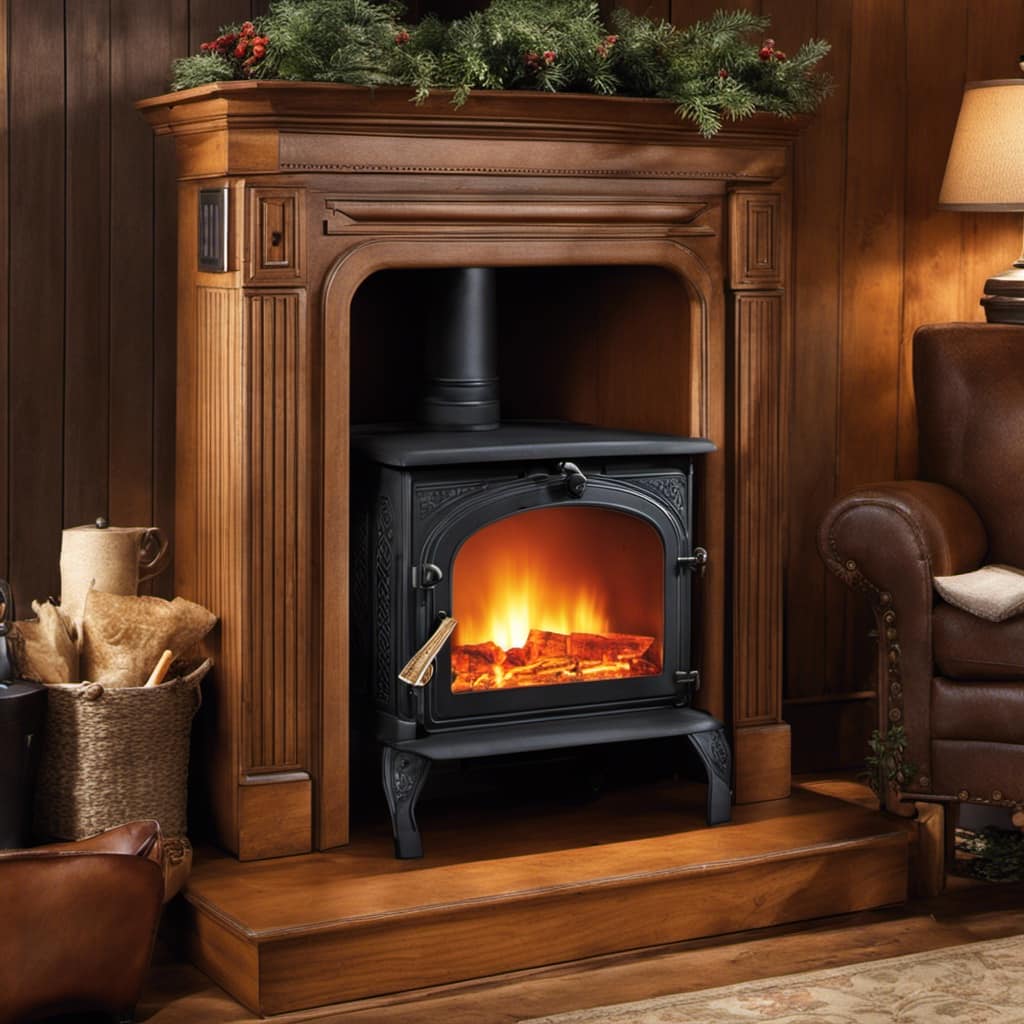
-
Closing the damper: On the other hand, closing the damper reduces airflow and slows down the burning process. This is useful when I want to maintain a lower temperature or extend the burn time.
-
Using the air vents: My wood stove has air vents that allow me to control the airflow even further. By adjusting these vents, I can fine-tune the temperature to my desired level.
When adjusting the airflow, it’s important to avoid common mistakes such as completely closing the damper, as it can cause the fire to go out or produce excessive smoke. It’s also crucial to regularly clean the stove and chimney to ensure proper airflow and prevent the buildup of creosote.
How to Keep Your Home Cozy With Proper Wood Stove Burning
When it comes to creating a cozy atmosphere in my home, proper airflow and temperature control are crucial with a wood stove. One important factor for efficient burning is the proper selection of wood. Hardwoods like oak and maple are ideal because they burn longer and produce more heat. Softwoods, on the other hand, like pine and fir, burn faster and produce less heat. It’s also important to ensure that the wood is properly seasoned, as wet wood can lead to poor combustion and a smoky environment.
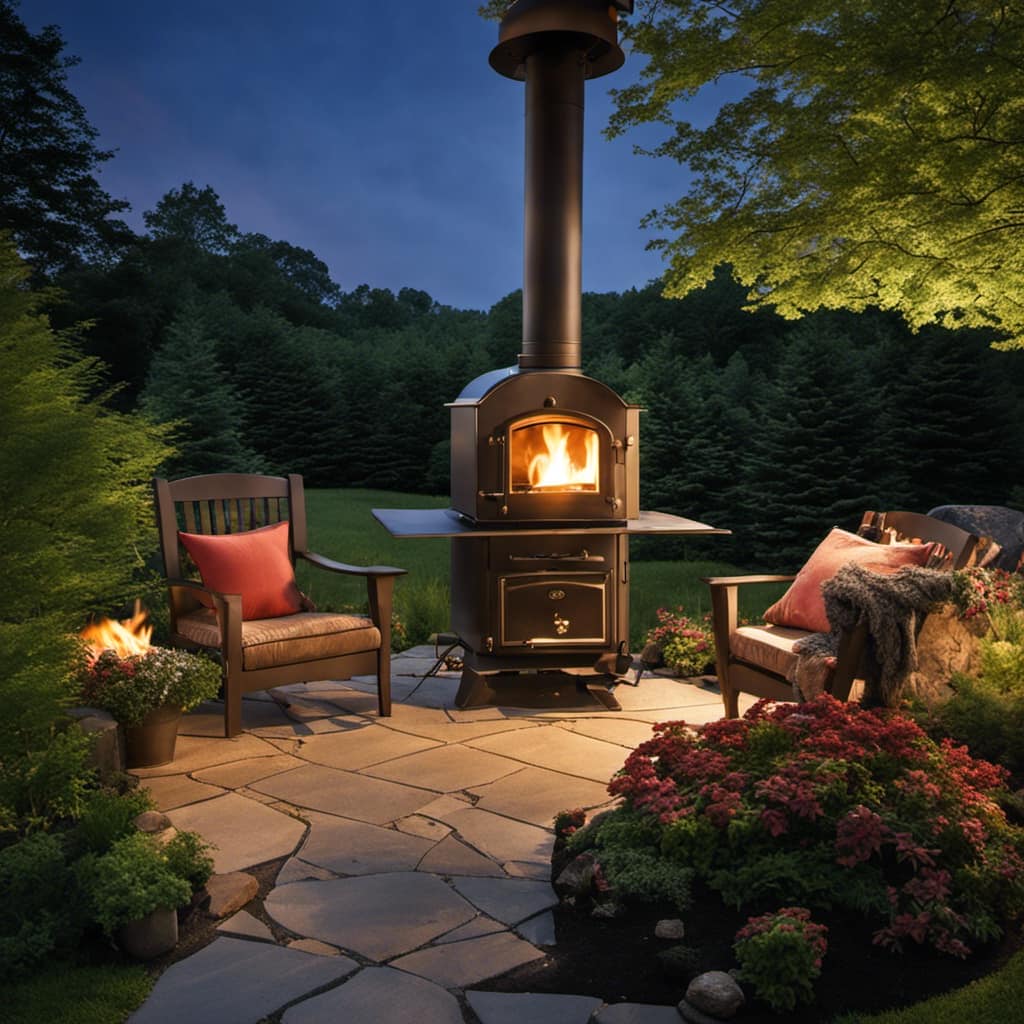
If I’m having trouble with temperature control, there are a few common issues to troubleshoot. First, I check the damper to make sure it’s open enough to allow for proper airflow. If it’s closed too much, it can restrict the flow of oxygen and result in a cooler fire. Another issue could be the size of the wood I’m using. If the pieces are too large, they may not burn efficiently and can reduce the overall temperature. Lastly, I always make sure to clean the stove regularly to prevent any obstructions in the airflow, such as ash buildup or a blocked chimney.
Frequently Asked Questions
How Long Does It Take for a Wood Stove to Reach Its Optimal Temperature Range?
It takes some time for a wood stove to reach its optimal temperature range. Factors such as the type of wood, air flow, and proper maintenance all play a role in achieving the desired heat.
What Are Some Common Signs That Indicate the Heat Output of a Wood Stove Is Being Affected?
When the heat from my wood stove isn’t up to snuff, I look for signs like weak flames and a lack of warmth. To troubleshoot, I check for clogged vents and make sure my firewood is dry.
Can You Provide Some Examples of How to Achieve the Right Balance Between Heat and Efficiency in a Wood Stove?
To achieve heat balance and increase wood stove efficiency, it’s crucial to consider factors like proper airflow, using seasoned wood, and regular maintenance. These steps ensure optimal performance and a comfortable, efficient heating experience.
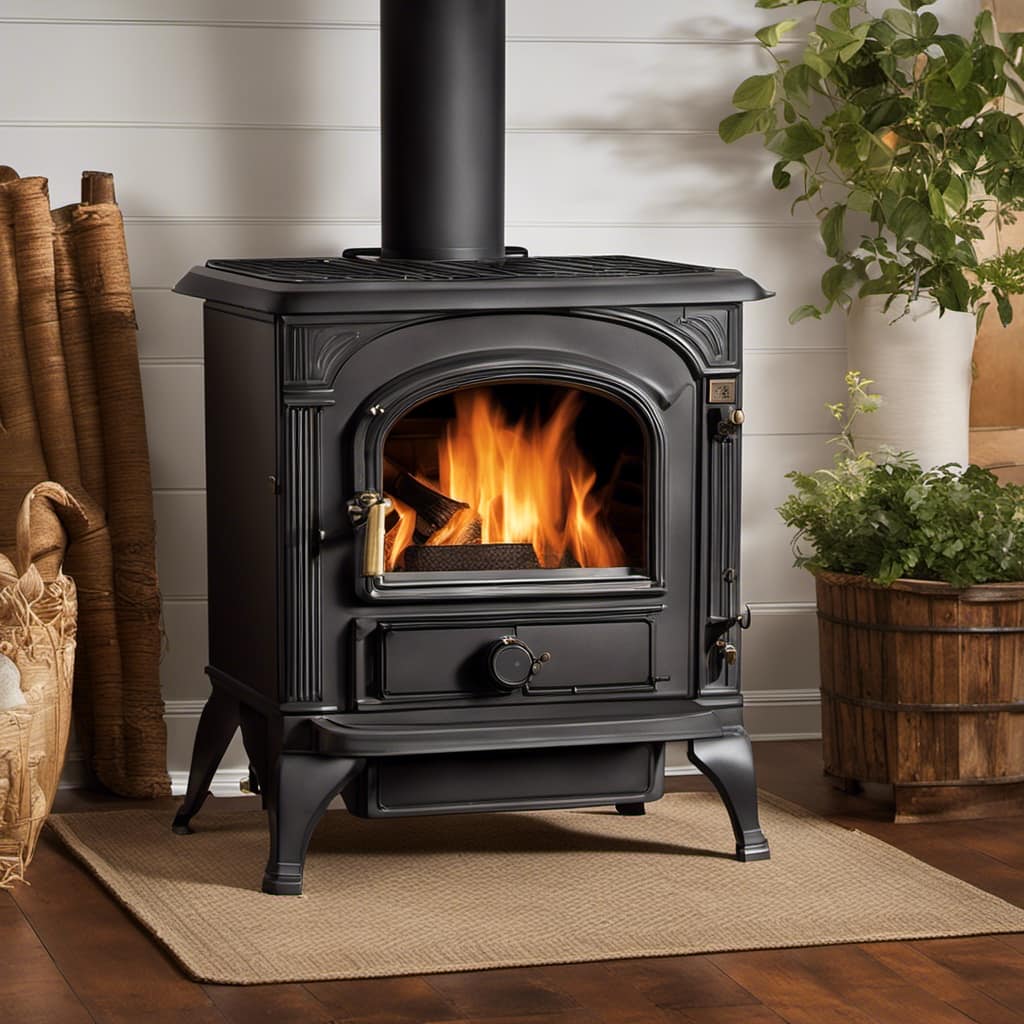
Are There Any Specific Techniques or Methods to Control the Temperature of a Wood Stove More Effectively?
There are various techniques and methods to effectively control the temperature of a wood stove. By adjusting the air vents, adding or removing wood, and monitoring the flue, you can achieve the desired temperature and maintain efficiency.
Besides Proper Wood Stove Burning, Are There Any Other Factors That Contribute to Keeping a Home Cozy?
When it comes to keeping a home cozy, there are a few factors to consider. Properly insulating your home is key for maximum coziness. Additionally, the arrangement of furniture can impact the warmth of a room.
Conclusion
In conclusion, maintaining the optimal temperature range for your wood stove is crucial for achieving efficient heat output.
Did you know that by burning wood at higher temperatures, you can significantly reduce creosote buildup in your chimney?

This statistic highlights the importance of keeping your wood stove burning hot, not only for comfort but also for safety and maintenance purposes.
So remember, a well-regulated and properly heated wood stove not only keeps your home cozy but also ensures its longevity.
Growing up surrounded by the vast beauty of nature, Sierra was always drawn to the call of the wild. While others sought the comfort of the familiar, she ventured out, embracing the unpredictable and finding stories in the heartbeat of nature.
At the epicenter of every remarkable venture lies a dynamic team—a fusion of diverse talents, visions, and passions. The essence of Best Small Wood Stoves is crafted and refined by such a trio: Sierra, Logan, and Terra. Their collective expertise has transformed the platform into a leading authority on small wood stoves, radiating warmth and knowledge in equal measure.





